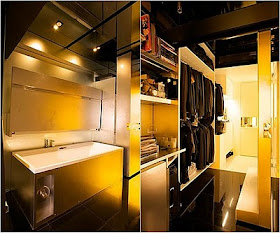
A little concept I did for the Nano Supermarket, organized by the Next Nature blog and Eindhoven University of Technology.
Describe your product in less than 200 words.
"The most innovative and revolutionary cereal currently on the market, Dr. Nano’s new N-flakes are the dream of any informed and connected consumer. These crunchy little nuggets have a completely safe form of nanotechnology inside that allows them to form a personal message for you after you pour them into your bowl of milk. All you have to do is wait a few seconds, and the flakes will rise to the surface to show you the weather for today, the amount of e-mail waiting for you, the score of that football match you missed, or even a personal message from a friend. And besides all that, N-flakes are simply scrumptious and highly nutritious, too!"
Describe the use of nanotechnology in your product, as well as its feasibility.
"Nanotechnology is necessary in this product in several ways:
- Having each individual flake receive a command from a central processing unit (mounted on the box). This command tells the flake where to position itself relative to other activated flakes that become part of the message displayed in the bowl.
- A mechanism need be present in each flake that allows the flake to, when activated, rise to the surface. For this, you can think of cells engineered to contain a pressurized gas. When activated, the cell would release the gas into the flake, hence propelling it upward to the surface.
- A mechanism need be present in each flake that allows the flake to position itself relative to other flakes while the flake is rising, as well as across the surface of the liquid in the bowl. For this, you can think of ‘nanomotors’: molecular motors that propel the flake in a certain direction.
- A nano-scale chip should be present in each flake. This chip would continuously receive signals about the position of other activated flakes, and control the nanomotors to get the flake in the desired position, within a short amount of time.
Realistically, I think this product can not make it to the market until about 2050. It requires nanotechnology of such a sophistication that the food industry will probably only take a hold of when it is available for a very low price. I do see it happening that nano-scale units will be standardized and produced on a massive scale for the food industry, maybe in the form of responsive and programmable powders."
Describe how your product can change our everyday life.
"Implications on people’s lives:
- The biggest implication, I think, is that through nanotechnology food can basically appear to ‘come alive’. As such, the distinction between product and ‘living being’ fades almost entirely, as our experience of these two always seemingly separate categories of things in the world will be less and less distinct. With food becoming physically active and responsive, people might feel as if they are eating something alive. In the N-flakes concept, the ‘it’s alive’ experience is minimized though, through not having the flakes physically change, and only having them give a single message, after which they become passive again like ‘ordinary’ foods.
- Putting nanotechnology in edible foods could make people very uncomfortable because they are eating parts of a ‘machine’ rather than ‘naturally’ grown food. Future generations have to grow up trusting that nanotechnology will not cause any significant harm to our bodies just like current generations have to trust a world where electromagnetic radiation is ubiquitous. It’s a big question how nanotechnology can be introduced to the world without entire cultures tipping into a state of distrust of this development.
- In a society revolving around information, people can tend to disconnect from their physical surroundings, such as the food they are eating. If the food itself starts to behave intelligently though, and becomes part of the information world, people may start to pay more attention to it, and less to technologies that deemphasize physical interactions. So where an information-overloaded person may simply devour food without any mental connection to it, in a world where the physical becomes the information this person can be led into a kind of ‘dance’ with the food. A disadvantage is that it could be quite a hassle interacting with things this way for just a little bit of information. Advantages are that the information can be more personal and meaningful, and that the interaction as a whole could bring you more into the present moment."






